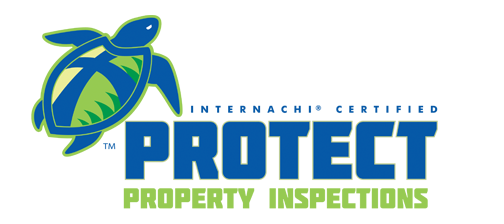
Having a home inspector who performs thermal imaging is beneficial for every home whether brand new all the way to historical homes, due to the valuable insights it provides into the property’s condition. Thermal imaging, also known as infrared thermography, uses infrared cameras to capture temperature differences on surfaces. This technology is incredibly useful for detecting issues that might not be visible to the naked eye.
Here’s why it’s a good idea to have a home inspector use thermal imaging, regardless of the home’s age:
1. Identification of Hidden Issues: Thermal imaging can reveal hidden problems that are not apparent during a visual inspection. For brand new homes, it can uncover construction defects that might not be immediately obvious, such as inadequate insulation, faulty electrical connections, or areas with poor sealing. In historical homes, thermal imaging can identify hidden water leaks, insulation gaps, and areas with potential energy loss.
2. Energy Efficiency Evaluation: Regardless of the home’s age, energy efficiency is a crucial consideration. Thermal imaging can identify areas of heat loss or air infiltration, helping homeowners and buyers understand where energy efficiency improvements are needed. In new homes, this can be especially valuable for ensuring that the property meets modern energy efficiency standards.
3. Moisture and Water Intrusion Detection: Thermal imaging is excellent for detecting moisture and water intrusion issues, which can lead to mold growth, decay, and other structural problems. Even in brand new homes, improper construction or sealing can lead to water infiltration that might not be visible without thermal imaging.
4. Electrical System Assessment: Thermal imaging can uncover overheating electrical components, indicating potential fire hazards. This is crucial for both new and historical homes, as faulty wiring or electrical issues can pose serious risks.
5. HVAC System Inspection: Infrared cameras can help identify uneven heating or cooling patterns in the HVAC system, indicating potential problems with ductwork or insulation. This is beneficial for optimizing the efficiency of heating and cooling systems in both types of homes.
6. Early Problem Detection: Detecting issues early can prevent them from escalating into major, costly problems down the line. For historical homes, in particular, identifying and addressing issues promptly can help preserve the property’s unique features and character.
7. Comprehensive Inspection: Incorporating thermal imaging into a home inspection enhances the overall assessment of the property. It provides a more comprehensive view of the home’s condition, helping homeowners and buyers make informed decisions.
8. Negotiation Tool: The findings from a thermal imaging inspection can be used as negotiation points during real estate transactions. Both buyers and sellers can use the information to arrive at fair agreements based on the property’s actual condition.
Protect Property Home Inspectors know thermal imaging is a valuable tool for home inspectors regardless of whether the home is brand new or historical. It provides crucial insights into the property’s condition, uncovering hidden issues and helping homeowners and buyers make informed decisions about necessary repairs, improvements, and maintenance.
This is why Protect Property Home Inspectors are rated #1 for the quality of inspections we provide.














